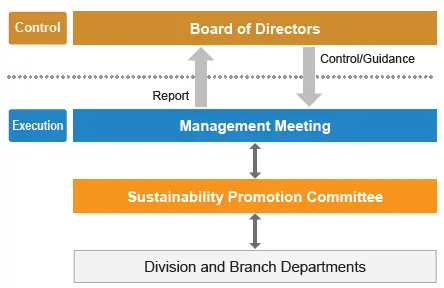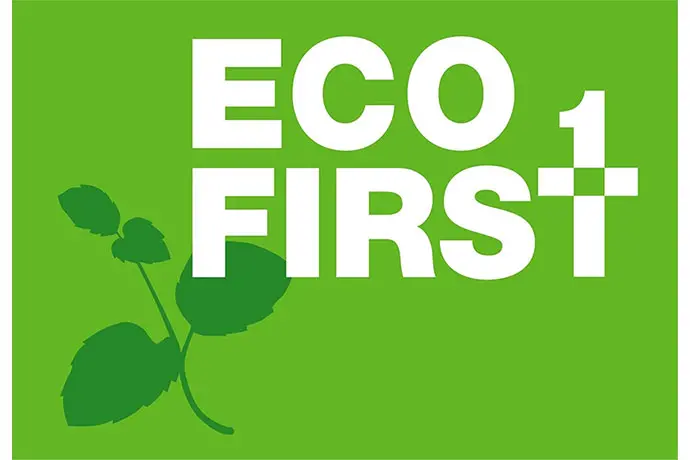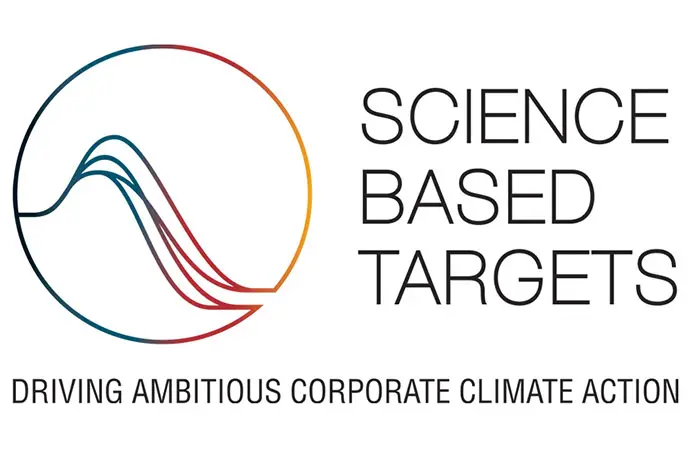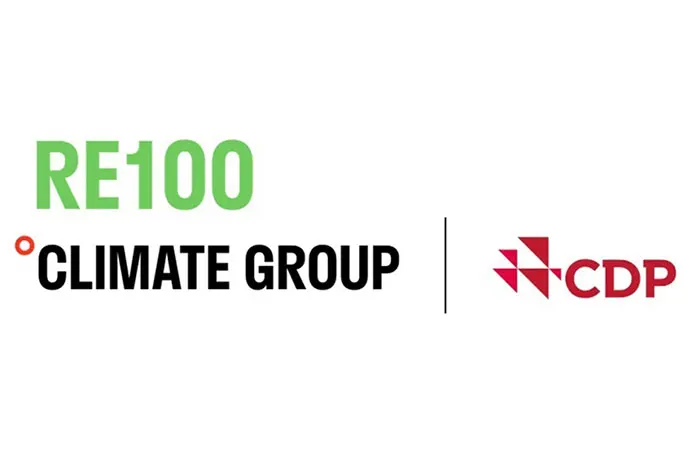Disclosure in Accordance with TCFD Recommendations
In our Medium-term Management Plan (FY2021–2023) and ESG Initiatives, the Kumagai Gumi Group declares its efforts to address environmental issues, including climate change, as a key management issue.
We have pledged to implement countermeasures related to climate change through our business activities and to promote the transition to a decarbonized society as part of the Eco-First program. Various efforts are underway to achieve carbon neutrality by 2050.
We have expressed our support for the recommendations of the Task Force on Climate-related Financial Disclosures (TCFD).
Additionally, we have identified and assessed climate-related risks and opportunities and analyzed scenarios to identify the medium- to long-term impact on our business activities.

Governance
We discuss important management matters, including climate-related issues, at the Management Committee (chaired by the president). We have also established the Sustainability Promotion Committee (chaired by the general manager of the Corporate Strategy Office) as an organization to assist the Management Committee.
The Sustainability Promotion Committee is chaired by the general manager of the Corporate Strategy Office, and is composed of the general managers of our business divisions and other members.
Focusing on ESG/SDGs perspectives, the committee considers broad measures that will contribute to our long-term growth and the establishment of a sustainable society.
In cooperation with management committees and other bodies, the committee considers specific measures to address environmental issues, including climate-related issues, and countermeasures based on progress toward our environmental targets, including CO2 emissions reductions.
The Board of Directors receives timely reports on matters related to climate change that have passed through the above process and supervises the status of our initiatives.

Strategy
The risks associated with climate change include risks due to transitional changes, such as stricter regulations on GHG emissions, and risks due to physical changes, such as more frequent and severe natural disasters.
On the other hand, the opportunities associated with climate change include growth in demand in new markets.
In addition, the impact of climate change may become apparent not only in the short term but also over the medium and long term.
As such, we have identified risks related to climate change, which we have categorized as transitional or physical, and opportunities related to climate change. We have also classified these risks and opportunities into the three timelines: short term (3 years or less); medium term (more than 3 years to 10 years); and long term (10 years).
Major identified risks include increased construction business costs due to stricter regulations on GHG emissions.
Major identified opportunities include growing demand for businesses related to renewable energy and increased sales driven by the expanding national resilience market.
Strategy formulation process

Result of scenario analysis
We assessed the financial impact as of 2030 for identified risks and opportunities we had determined would have significant impacts on our business.
We adopted and analyzed the 4°C scenario, which assumes a 4°C increase in the global average temperature by 2100 compared to pre-industrial times. We also adopted and analyzed the 1.5°C scenario, which assumes a 1.5°C increase.
As a result of the scenario analysis, we confirmed that increased earnings would outweigh any negative impact.
Under either scenario, the market for the construction business, which is our main business, is expected to expand.
We also reaffirmed the importance of countermeasures to risks and opportunities. At the same time, we confirmed that they are consistent with our business strategies set forth in the Medium-term Management Plan (FY2021–2023).
Primary scenarios for analysis of transitional risks and opportunities
4℃ scenario: Stated Policy Scenario (STEPS) for IEA
1.5℃ scenario: Net Zero Emissions by 2050 Scenario (NZE) for IEA
Primary scenarios for analysis of physical risks and opportunities
4℃ scenario: RCP 8.5 for IPCC
1.5℃ scenario: RCP SSP 1–1.9 for IPCC
Source of primary parameters
| Items | Sources |
|---|---|
| Carbon taxes | IEA WEO 2021 |
| Number of typhoons (2030, 2050) | Ministry of the Environment, “Climate Change Impact Assessment Report”; Japan Meteorological Agency Report |
| Number of days of heavy rain (2030, 2050) | World Bank, Climate Change Knowledge Portal |
| Average temperatures (2030, 2050) | World Bank, Climate Change Knowledge Portal |
| Increase in number of days of intense heat (2030, 2050) | World Bank, Climate Change Knowledge Portal |
| Rate of decline in labor productivity (2030, 2050) | ILO, “Working on a WARMER planet” (2019) |
| Energy mix | IEA WEO 2021 |
| Market predictions for medium- to large-scale wooden buildings | Forestry Agency, “Market area roadmap: Wooden large construction / Smart forestry industry” |
| Market predictions for ZEB |
|
| Construction investment forecasts for the national resilience market | Cabinet Secretariat, “Overview of the 2022 National Resilience Annual Plan” |
Result of scenario analysis
| Category | Factors | Details | Financial Impact | Measures | |||
|---|---|---|---|---|---|---|---|
|
1.5°C warming scenario |
4°C warming scenario |
||||||
|
Risks |
Transition risks |
Policies, laws and regulations |
More stringent regulations governing GHG emissions(Carbon pricing implementation, etc.) |
|
Large | Small |
|
|
Physical risks |
Acute physical risks |
More frequent and intensifying natural disasters |
|
Small | Large |
|
|
|
Chronic physical risks |
Increase in average temperature |
|
Small | Medium |
|
||
|
Opportunities |
Energy sources |
Increase in demand for renewable energy related businesses |
|
Medium | Small |
|
|
|
Products and services |
Increase in demand for medium- to large-scale wooden structures |
|
Large | Medium |
|
||
| Increase in demand for energy-saving buildings |
|
Large | Medium |
|
|||
|
Market |
Expansion of national resilience markets |
|
Large | Large |
|
||
Risk Management
We believe accurately assessing and reducing risks as well as striving to maximize opportunities associated with business activities will lead to enhanced corporate value.
Regarding important matters, we identify and assess risks and opportunities for each case. Final decisions are made by the Management Committee and the Board of Directors.
Each business division identifies and assesses risks and opportunities in business processes, and considers necessary countermeasures and incorporates them into our fiscal plans. The status of these initiatives is monitored and reported quarterly to the management committees.
Environmental risks and opportunities, including climate change, are reported to and discussed by the Sustainability Promotion Committee. They are also reported to and discussed by the Management Committee and the Board of Directors, as necessary.
Metrics and Targets
As part of the Eco-First program and SBT, we have set emissions reduction targets for greenhouse gases (Scope 1, 2, 3) and mixed construction waste, and disclose the results of these measures.
We joined the RE100 initiative in February 2021, and are actively promoting the introduction of renewable energy power to achieve carbon neutrality.
In addition, we have created an ESG/SDGs Matrix that links our business to the SDGs. We disclose indicators, targets, and results for various distinct issues, including greenhouse gas reduction targets.



